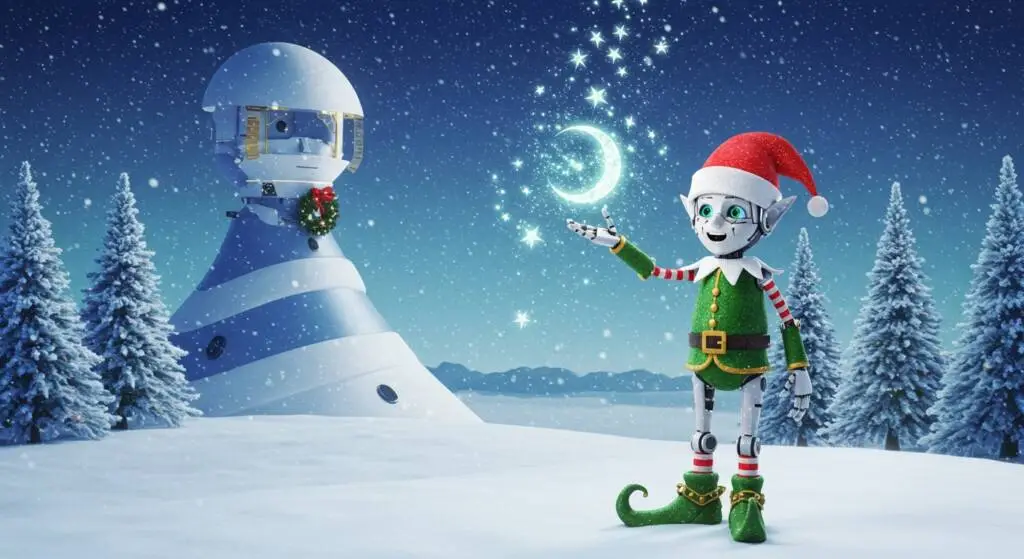The celebration of Christmas, rooted in the Old English term “Cristes Mæsse,” meaning the “mass of Christ,” centers around the birth of Jesus in Bethlehem. This holiday is imbued with a plethora of customs and traditions that have evolved over the centuries, heavily influenced by the biblical narrative of Christ’s birth. These customs not only serve to commemorate the event but also foster community spirit and goodwill.
The Amazing History of Christmas | 5 Minute Video by PragerU.
Gift-Giving
One of the most cherished customs of Christmas is gift-giving. This tradition draws inspiration from the biblical story of the Wise Men, who journeyed to present valuable gifts to the newborn Jesus. The exchange of gifts symbolizes generosity and embodies the spirit of giving, encouraging people to share blessings with loved ones and those in need. This practice fosters a sense of connection and community, reminding us of the importance of kindness and compassion during the holiday season. Many families create special moments around this custom, often gathering together to exchange gifts, ultimately creating lasting memories.
Christmas Carols
Christmas caroling is another beloved tradition that has become synonymous with the holiday. Carols are songs that celebrate the birth of Jesus and recount various aspects of the nativity story, bringing joy and goodwill to all who hear them. These musical renditions range from traditional hymns to modern compositions, often performed in homes, public squares, and churches. Singing carols helps to instill a sense of joy during the season, allowing people to come together in spirit and song.
Nativity Scenes
Nativity scenes depict the Christmas story, featuring figures of the Holy Family, shepherds, the Wise Men, and various animals surrounding the baby Jesus. These displays, found in homes and public places, act as poignant reminders of the season’s true meaning. Setting up nativity scenes is often a cherished family activity that encourages discussions about the significance of Christ’s birth and the values it embodies.
Historical Context
Interestingly, the celebration of Christmas as we know it today did not begin until approximately 200 years after Christ’s death. The exact date of Jesus’ birth remains uncertain; however, December 25th was likely chosen to coincide with existing pagan festivals. This strategic selection aimed to encourage the conversion of non-Christians by overshadowing their celebrations with a Christian alternative. Over time, the blend of these ancient traditions led to the development of the rich customs associated with Christmas.
Influence of Ancient Holidays
Several ancient holidays significantly contributed to shaping the modern celebration of Christmas:
Saturnalia: This Roman festival, held in December, was characterized by feasting, merriment, and a spirit of revelry. Elements of Saturnalia, such as communal celebrations and indulgent feasts, contributed to the festive atmosphere we now associate with Christmas.
Yule: Celebrated in northern Europe, it involved lighting great fires and dancing around them. Various traditions associated with Yule, such as the Yule log, have persisted and evolved into contemporary Christmas practices.
The Christmas Tree
The tradition of the Christmas tree dates back to the 16th century in Germany. German families began decorating fir trees with apples, roses, and candies, which symbolized the Garden of Eden during religious plays. This practice became more elaborate over time, with Martin Luther famously credited for adding lights to the trees, inspired by the stars twinkling through the branches.
Queen Victoria’s husband, Prince Albert, played a crucial role in popularizing the Christmas tree in England. The widespread adoption of this tradition continued as German immigrants brought it to America during the 19th century, solidifying its status as an essential element of Christmas celebrations.
The Legend of Saint Nicholas
The iconic figure of Santa Claus finds its origins in Saint Nicholas, a 4th-century bishop renowned for his generosity to the less fortunate, particularly children. After his death, he was canonized, and his legacy grew, especially throughout Europe. The Feast of St. Nicholas, celebrated on December 6th, featured acts of charity and gift-giving, reinforcing the holiday’s spirit of generosity.
The Dutch name for Saint Nicholas, “Sinterklaas,” eventually evolved into “Santa Claus” in America. This transformation led to the emergence of various traditions, including leaving shoes out for treats, shaping the modern image of Santa Claus as a jovial figure who brings joy and gifts to children.
Conclusion
Christmas is a richly woven tapestry of diverse traditions, historical influences, and cultural practices. While it celebrates the birth of Christ, many of its customs blend ancient festivities with the enduring legacy of figures such as Saint Nicholas. From gift-giving to caroling and tree decorating, Christmas remains a multifaceted holiday that encourages love, kindness, and community spirit, making it a cherished time of year for many around the world.
Christmas Traditions
For a deeper dive into the enchanting variety of Christmas customs celebrated across America, check out our article on Christmas Traditions in the United States.
Disclaimer:
The information provided in this blog is for informational purposes only and should not be considered professional advice. While we strive to provide accurate and up-to-date information, we make no guarantees about the completeness or reliability of the content. Any actions you take based on the information in this blog are at your own risk. Additionally, this blog may contain affiliate links, and we may earn a commission from purchases made through those links.



